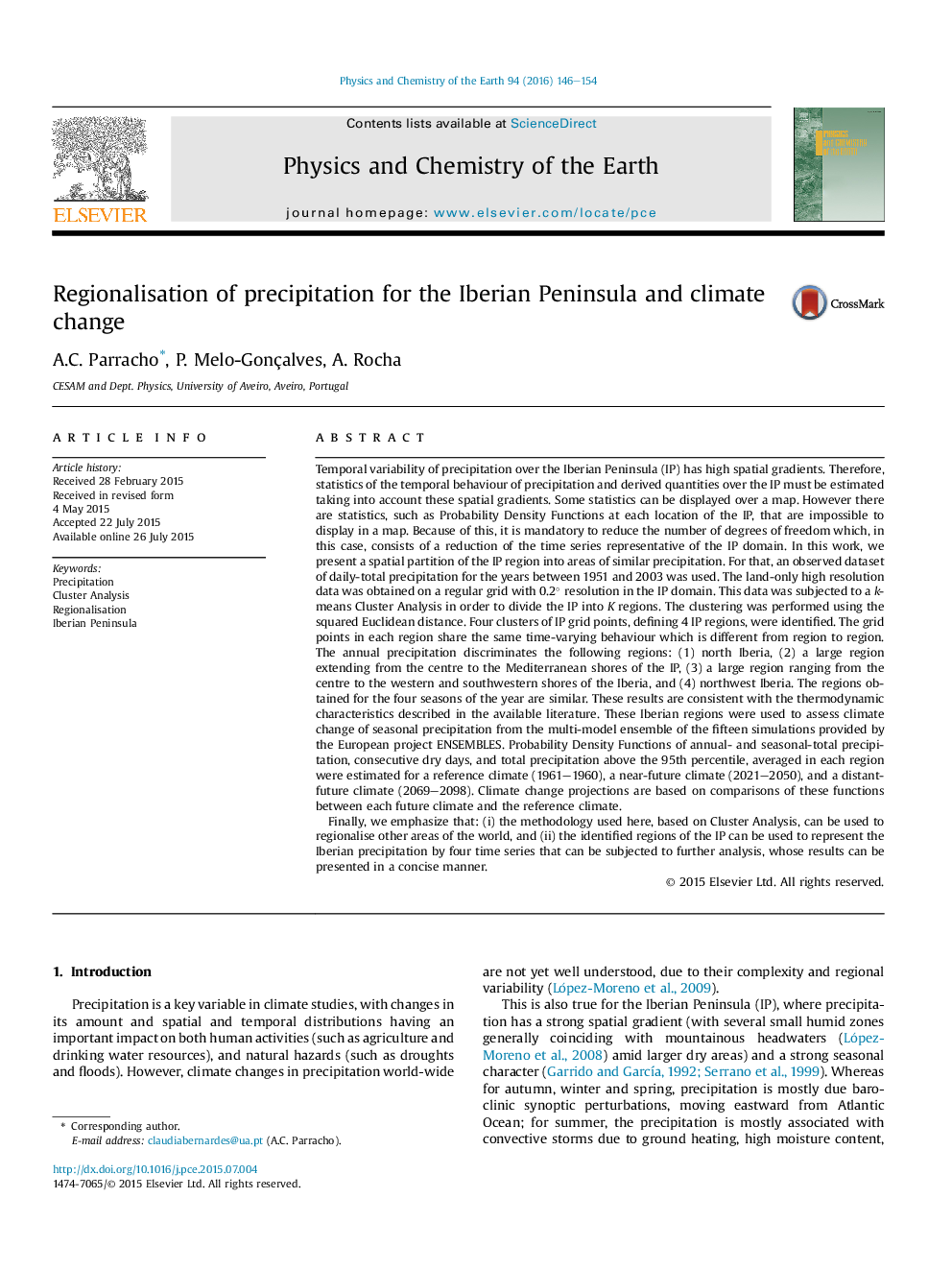| کد مقاله | کد نشریه | سال انتشار | مقاله انگلیسی | نسخه تمام متن |
|---|---|---|---|---|
| 4720830 | 1639344 | 2016 | 9 صفحه PDF | دانلود رایگان |
Temporal variability of precipitation over the Iberian Peninsula (IP) has high spatial gradients. Therefore, statistics of the temporal behaviour of precipitation and derived quantities over the IP must be estimated taking into account these spatial gradients. Some statistics can be displayed over a map. However there are statistics, such as Probability Density Functions at each location of the IP, that are impossible to display in a map. Because of this, it is mandatory to reduce the number of degrees of freedom which, in this case, consists of a reduction of the time series representative of the IP domain. In this work, we present a spatial partition of the IP region into areas of similar precipitation. For that, an observed dataset of daily-total precipitation for the years between 1951 and 2003 was used. The land-only high resolution data was obtained on a regular grid with 0.2° resolution in the IP domain. This data was subjected to a k-means Cluster Analysis in order to divide the IP into K regions. The clustering was performed using the squared Euclidean distance. Four clusters of IP grid points, defining 4 IP regions, were identified. The grid points in each region share the same time-varying behaviour which is different from region to region. The annual precipitation discriminates the following regions: (1) north Iberia, (2) a large region extending from the centre to the Mediterranean shores of the IP, (3) a large region ranging from the centre to the western and southwestern shores of the Iberia, and (4) northwest Iberia. The regions obtained for the four seasons of the year are similar. These results are consistent with the thermodynamic characteristics described in the available literature. These Iberian regions were used to assess climate change of seasonal precipitation from the multi-model ensemble of the fifteen simulations provided by the European project ENSEMBLES. Probability Density Functions of annual- and seasonal-total precipitation, consecutive dry days, and total precipitation above the 95th percentile, averaged in each region were estimated for a reference climate (1961–1960), a near-future climate (2021–2050), and a distant-future climate (2069–2098). Climate change projections are based on comparisons of these functions between each future climate and the reference climate.Finally, we emphasize that: (i) the methodology used here, based on Cluster Analysis, can be used to regionalise other areas of the world, and (ii) the identified regions of the IP can be used to represent the Iberian precipitation by four time series that can be subjected to further analysis, whose results can be presented in a concise manner.
Journal: Physics and Chemistry of the Earth, Parts A/B/C - Volume 94, August 2016, Pages 146–154
